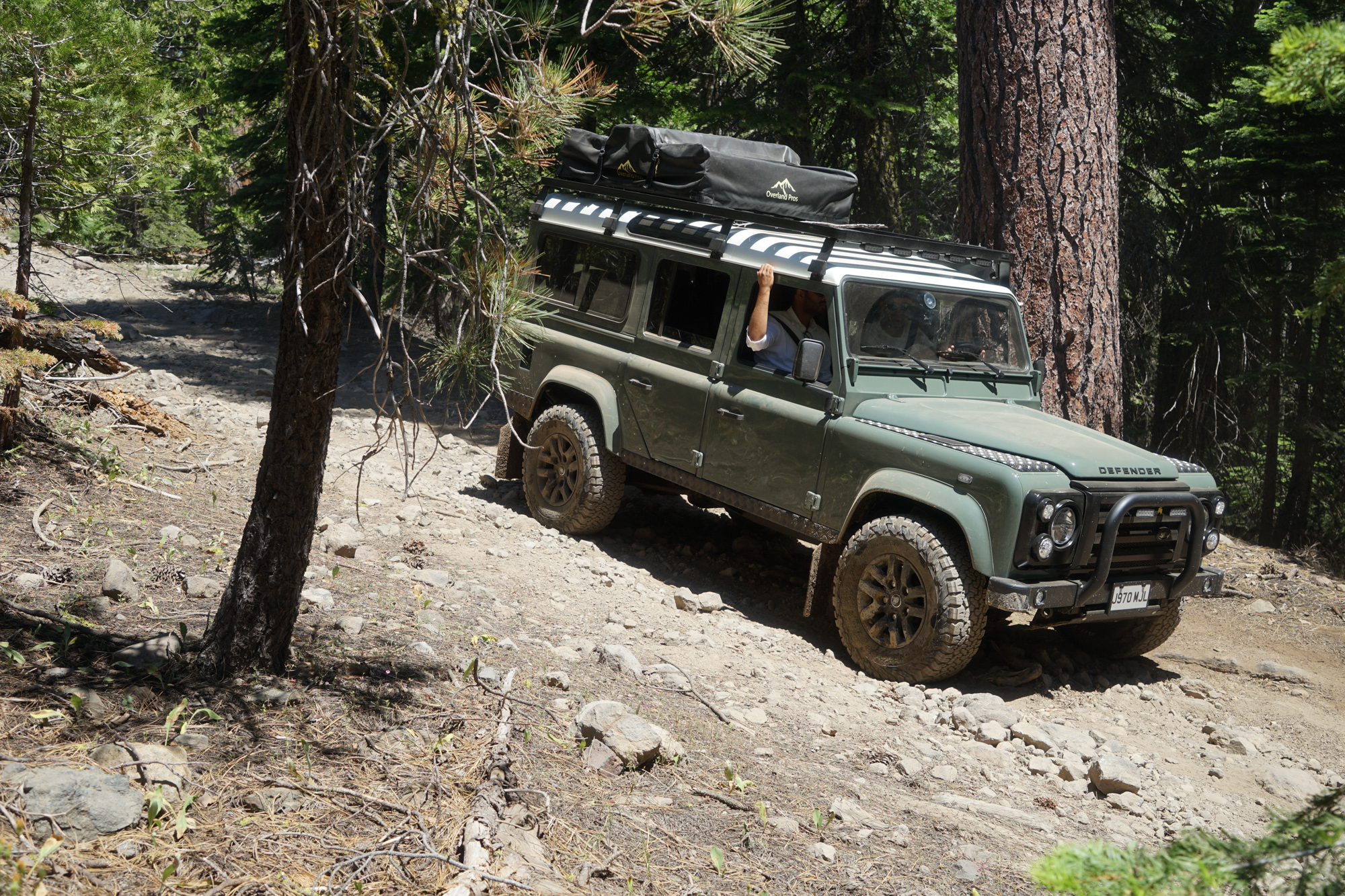Prologue: Namibia
“Yeah, it’s leaking oil pretty good.” I’m yelling from underneath a well-outfitted Land Rover Defender 110, trying to overcome the clattering of an idling 300Tdi motor. Early on as a professional archaeologist, I learned just to accept the vehicle you get when you get there and get working. We were somewhere in Namibia’s Sperrgebiet, not too far north of Lüderitz, but still remote enough that the recovery of a 110 with a blown motor wouldn’t be fun. My colleague Howard, a British exploration geologist, is strapped into the uncomfortable RHD seat. “Why did you climb under?” he queries. “I thought you were just checking the bloody tire pressure.”
After fidgeting with the satellite phone, Howard finally reaches a mechanic back at the motor pool in Windhoek, from whence the 110 came. I hear a one-sided conversation, mostly H repeating “Uh-huh,” “Right,” and the occasional “I see,” and finally signing off with a “Will do, cheers.”
“Well, what did he say?” I slam the passenger door closed, and it nails my knee—the one that had arthroscopic surgery. “He said if any Land Rover is leaking, that’s a good sign. If it stops leaking, we’re screwed. He recommends topping it off each morning.” What?
Close to Sossusvlei, on those last few kilometers where only four-wheel drives are recommended, we hear thumps in a wheel well. I stop and discover some lug nuts had worked loose—bizarre. We circle back and find them in the middle of the deep sand track—even more bizarre.
A few weeks later, heading to Tsumkwe on the C44, not far from the Botswana border, we hit a section of washed-out road. Loads of talc-like dust enters via the front door seals, somewhere else down by our feet, and especially through the rear door. We grind to a fast halt. We inhale the tan powder, and can’t see out the front window. Howard hits the wipers. The driver’s side does its job, but the passenger wiper has stage fright. What flashes through my mind isn’t the predicament, it is: “Hmm, need to put that wiper on the repair list.” We’re laughing so hard that conversation isn’t possible. We finally make it to Tsumkwe, connect with our Kung translator, and it’s only then I realize the extent of finely minced particulate all over our gear bags inside the 110.
Later that month, by Twyfelfontein, on a road section with extreme washboard (actually rare in Namibia), the radio in our 110 rattles itself free from the dash mount and dangles precariously by some wires. We stuff it back in, using cardboard fragments as wedges, where it remains secure for quite some time. Inbound to Windhoek for resupply and driving at dusk, we are perplexed by oncoming vehicles flashing their lights at us. We pull over and discover our high beams stuck in the “on” mode, and the dipswitch ineffective. Oh, and the dash lights were barely visible in the dark cab, especially the one by the diesel fuel gauge.
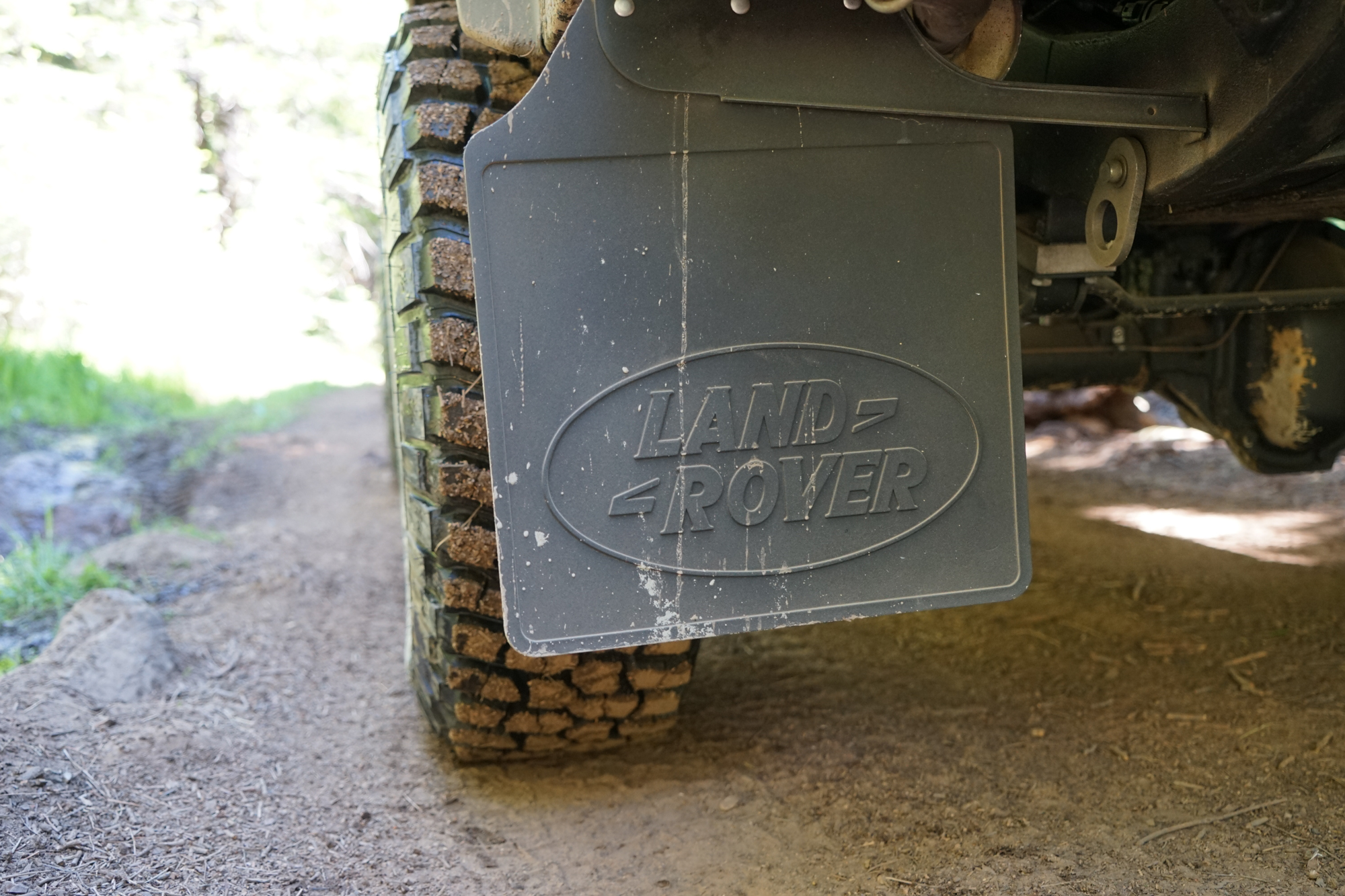
Tough Crowd
Overseas, I’ve driven Hilux and different iterations of Land Cruisers. I’ve also driven, among other 4WDs and 2WDs, various Land Rovers, Nissans, Suzukis, and more recently, Mercedes Geländewagens. Owners of the latter three makes usually don’t jab each other constantly like the Toyota and Land Rover crowd, though. It’ll be giggles aplenty around the campfire, someone getting teased about their titanium cookery—and then some joker breaks in with: “Wait, why do 110s have those alpine windows in their top? So when you’re waiting inside for rescue, you can see the inbound helicopter coming.”
I took to the 110 we had in Namibia, living and working out of it daily for many weeks. We had to wrench on it occasionally, and conduct thorough morning inspections, but it always got us where we needed to go. I’m not coming up with a convenient revisionist history. Many people more knowledgeable than myself have adequately described the phenomenon: Land Rovers just grow on you. I still laugh at the jibes, though.

The Background
I traveled to Arkonik’s first North American press event, recently held in the mountains of South Lake Tahoe, highly anxious to experience Arkonik’s Land Rover 110 Defenders. Based in the UK, Arkonik hunts down used yet clean and titled D90, 110, and 130s, mainly from more temperate countries on the European continent. They bring the trucks back to their factory in Somerset, England, strip them down to the frames, and build them back up to the customer’s desires.
For the North American market, they procure Defenders that meet import vehicle age requirements and emissions standards. They work with experienced, reliable handlers who oversee the entire process through the US customs inspection. Arkonik directs the Defender’s transport and delivery to each client’s doorstep, then US Client Services Representative Eric Yohe conducts a personal handover. This includes on- and off-highway familiarization drives with the vehicle, a laborious walkthrough of all systems (including specialized gear), and issuance of the custom owners manual. Arkonik has a North American repair network (essentially, vetted Land Rover specialists) and a phone “hotline.”
With the exception of the specialized customs team and door-to-door delivery, this doesn’t sound too different than, say, a UK-based buddy cleaning up a nice 110 that meets age and emissions requirements, finding an importer, and shipping it to the States for your retrieval. However, this is not Arkonik’s modus operandi, and there are key facets that separate them from most Defender rebuilders and importers.
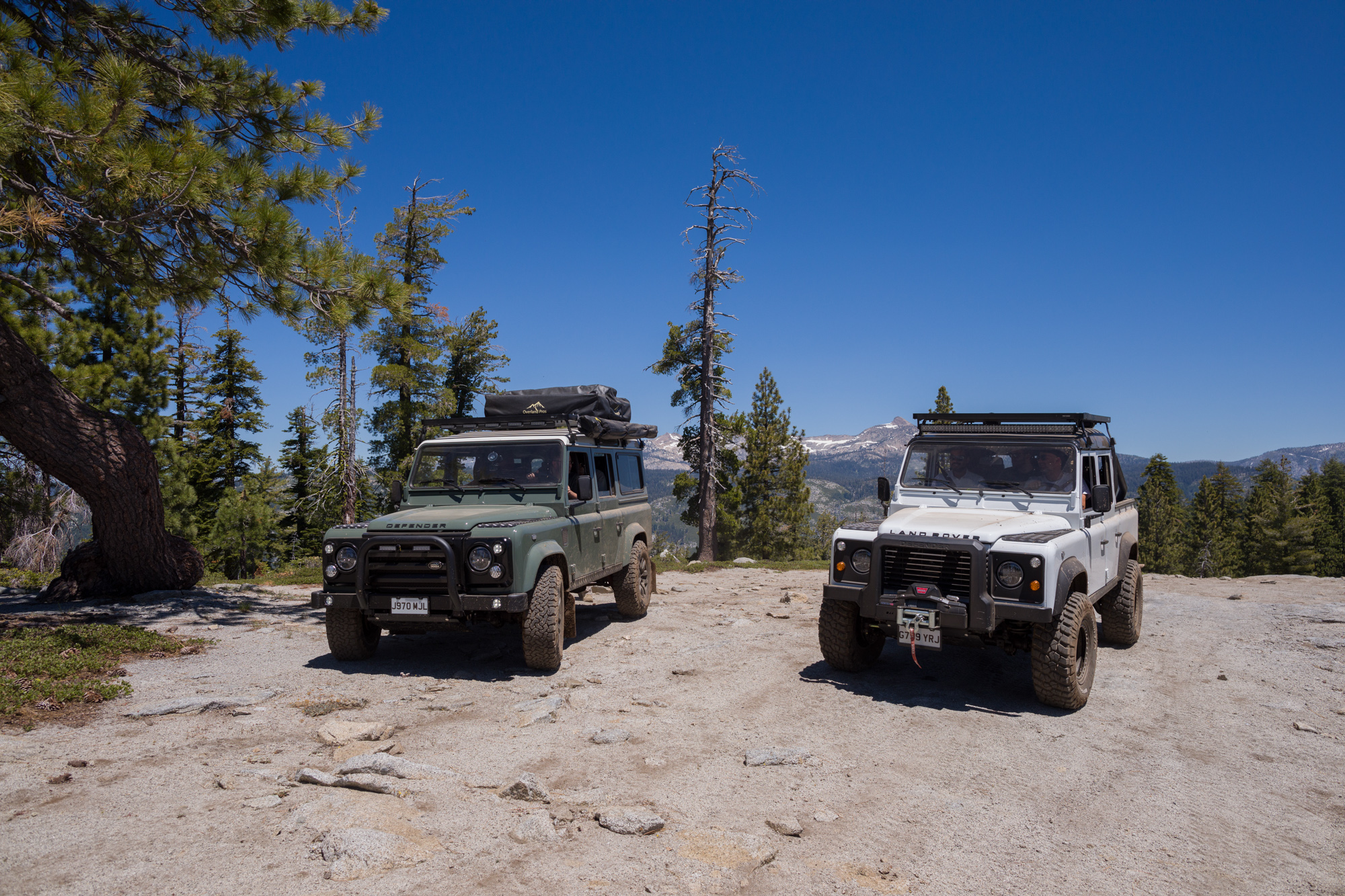
Once a truck is stripped down, the Arkonik staff (approximately 70 strong) get to work on every aspect of your build. If OEM or NOS Defender parts never made the grade the first time around, Arkonik doesn’t perpetuate excuses or mask flaws; they overcome them. Their team also upholds the vehicle’s original purpose, focus on keeping the soul and capability of the vehicle intact, and aim to make it even more reliable. If customers prefer other motors, like a 2.8-liter Cummins diesel or a 400+ horsepower LS3, Arkonik will oblige, but only once the vehicle is in-country and retitled in your state of choice. All of this makes for a tall undertaking, but it’s their philosophy.
To clarify, they don’t just do a tidier job of installing cable ties, rerouting an antenna wire, or spraying on the primer. They take whatever steps to address decades of irritating electrical, climate control, corrosion, braking, water ingress (a personal favorite), and other issues. Arkonik’s electrical engineers create a complete custom wiring loom from scratch for each vehicle. Even brand-new OEM panels are sanded back to bare metal, then meticulously prepared, primed, baked, and inspected before the whole process is repeated for each and every coat of paint. At the same time, they incorporate your build concept into the vehicle. Essentially, parts of each vehicle might be your custom expression (e.g., type and color of seats, carpeting, wheels, tires, bumpers, paint job, suspension, etc.), while key common components (door seals and latches, relays, rivets, hinges, aluminum panels, etc.) might be made from scratch, to better than original standards, or obtained from über-reliable aftermarket sources.
This is definitely not the truck your pal in Camden Town sourced from a farmer outside Penrith. As you can rightfully assume, Arkonik builds are not cheap. Price aside, I am intrigued by the notion of rebuilding a venerated classic from the ground up and keeping its core character alive for the next generation. I’m even more fascinated with improvements to overcome established issues and to make it even more reliable, yet just as repairable. With all this in mind, I accepted the assignment to cover Arkonik’s initial US off-road experience. Interestingly, at the same time, over in England, the new Land Rover Defender was being unveiled to the world press. Well, someone had to mind the old guard while eyes turned elsewhere.
The Field Test
Arkonik’s press occasion was slated to include some alpine highway cruising, which is appreciated from a test perspective since much North American off-highway driving includes lengthy stretches of tarmac, to reach the dirt. At the welcome dinner, we were reassured there would be many hours of technical driving on mountain single-tracks, with sections requiring spotters, where deft control of throttle and brake would be paramount. My experience with Defenders is almost entirely off-pavement, save for a few jaunts into town, so this would be where I could separate leather seats from hype.
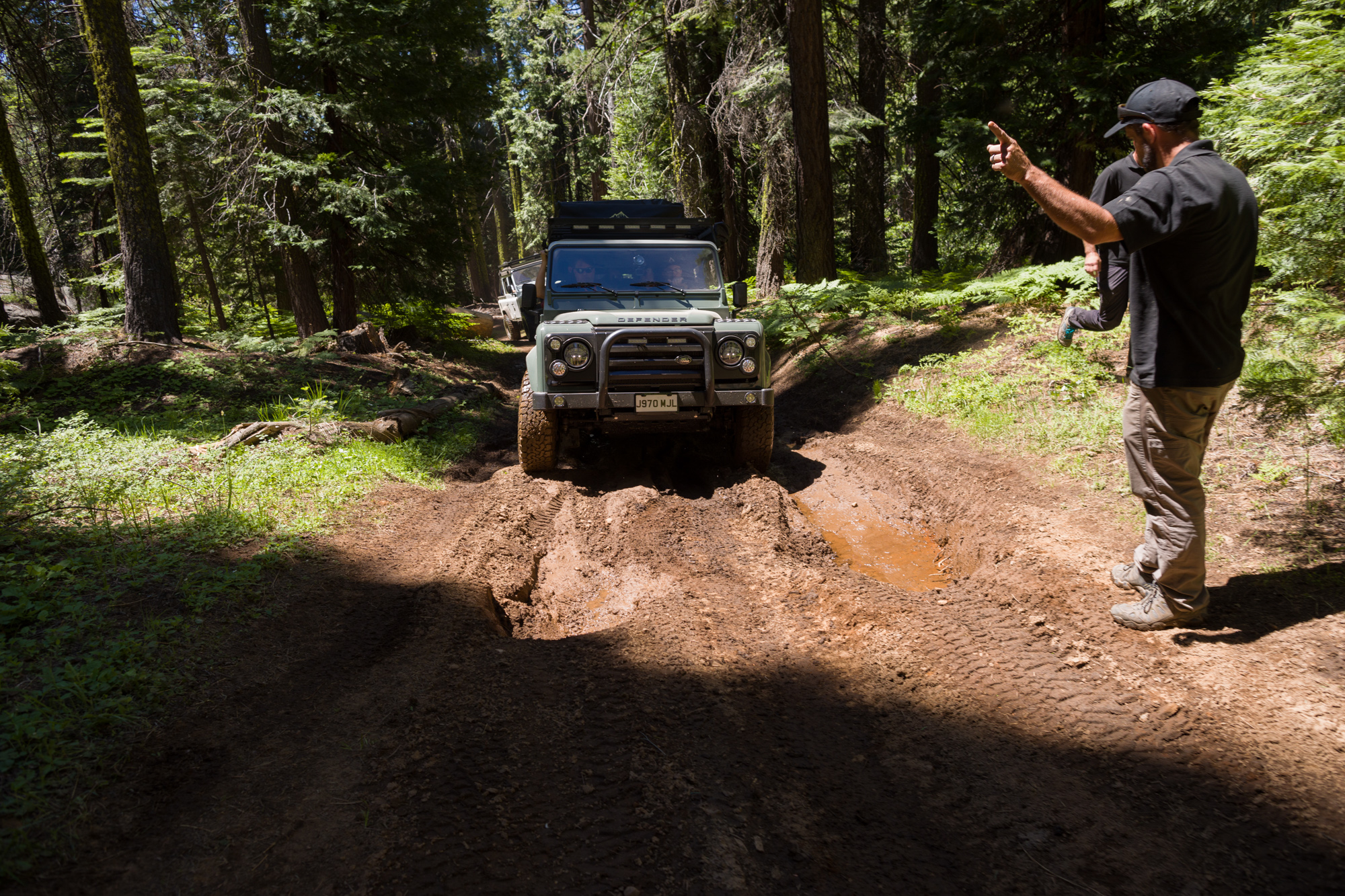
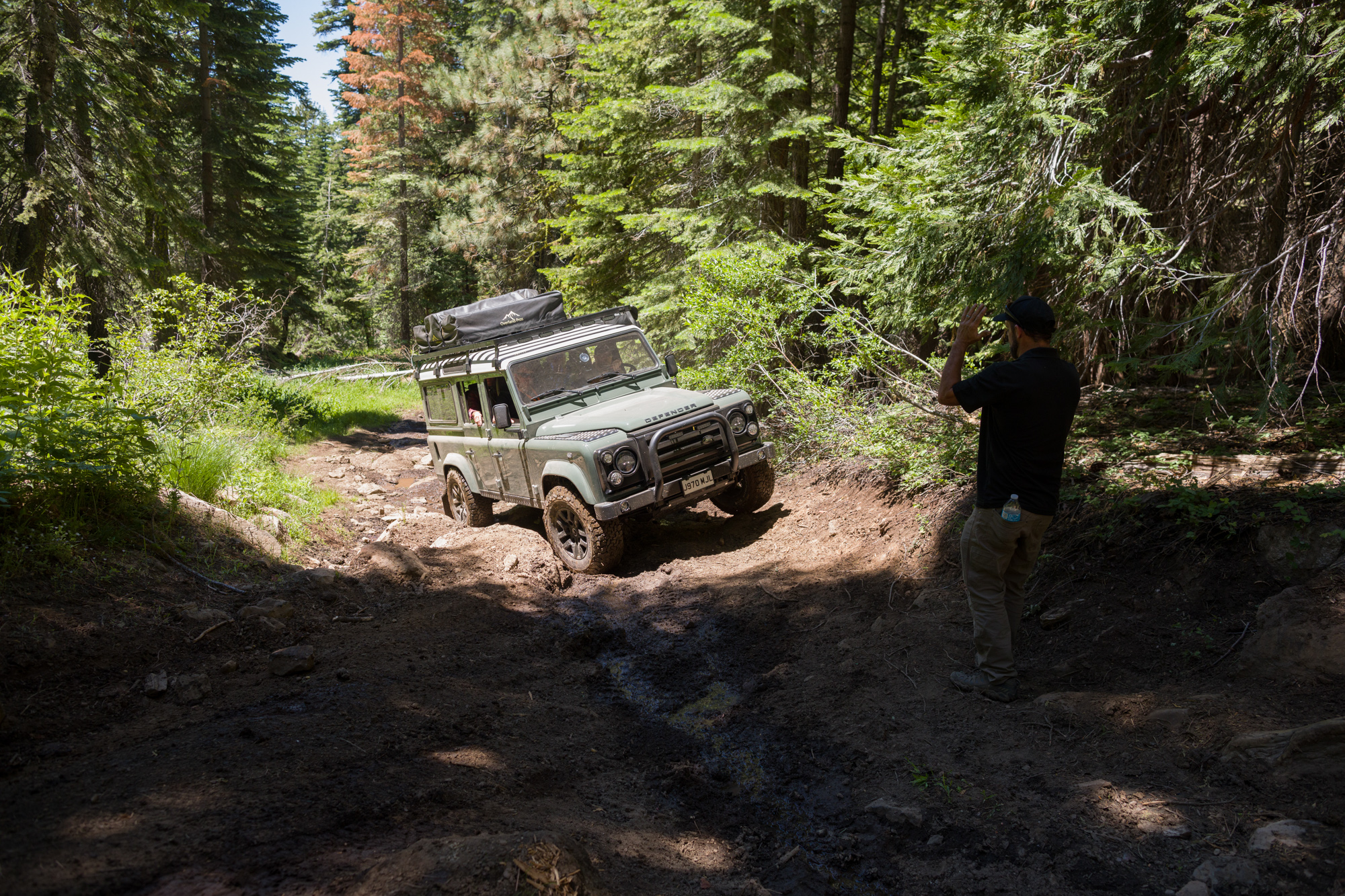
At the outset, I jockey over to a 1992 manual transmission diesel 110, with the call sign Wessex (all Arkonik trucks are named upon completion), powered by an original (albeit rebuilt), tractor-like, five-speed 200 Tdi motor. The Defender 110 is arguably the most iconic platform and one that has certainly shaped my opinions about these venerable trucks. And besides, the D90 that Arkonik brought along, painted in Aston Martin Racing Green sporting an automatic LS3 V8 Corvette motor, was off-limits for press taking the helm (as the new owner only just had it delivered).
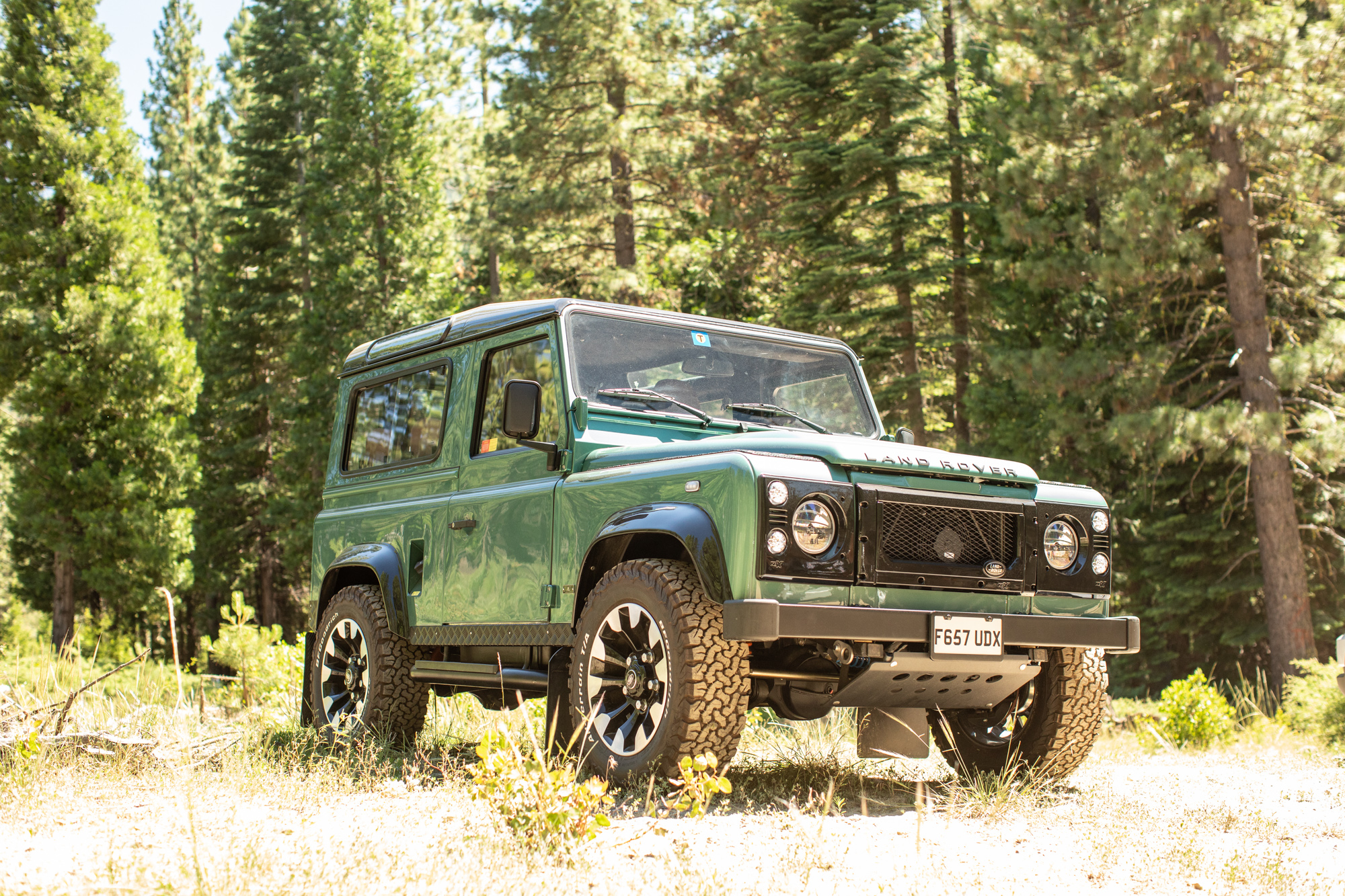
Wessex’s exterior is Keswick Green. Inside are seven upholstered leather seats. Brand-new BFG All-terrain KO2s are mounted on Kahn 16-inch alloy wheels. Saddled up and buckled in, I scan the interior. Everything appears stock until my eyes find small details, such as solid aluminum door latches and gear knobs, and high-back center row leather seats. The gearshift floor gaiter is leather and matches the seats. The nylon headliner is refreshingly stock, a light color called Gray Ripple that makes Defender interiors seem cavernous. It’s all very tailor-made for a 110 though, like we should be heading over to the country club for a round of golf followed by gin and tonics near the green, instead of navigating boulders and working on the high-elevation equivalent of desert pinstriping.
Dazzled by the details, subtle as they are, I feel they may be hiding the awkward reality: that it’s still a D110 with issues. I prepare to be underwhelmed by launching my own Defender pass/fail test sequence, which is nothing more than adjusting the driver’s seat. I’m hardly the tallest person at 5’10’’. Even with a stock 90 or 110 seat all the way back to the stop, my leg remains quite bent with boot resting on the clutch. This is great for rehabilitating a knee surgery, strengthening the left leg in such a manner, but hardly optimal when continuous clutch work is necessary. It also doesn’t permit the driver to get some legroom away from the bulkhead on long-distance drives. I pull the fore/aft adjustment lever, push back on the chunky rubberized floor mat, and find that with legs fully extended, my feet can’t touch the firewall bulkhead. I put my foot on the clutch, and my leg is bent closer to 45 degrees, rather than 90—pass. (The Arkonik team informed me later that they custom build extended rails, giving the seats more fore/aft range.)
On the highway, Wessex has a slight understeer. This is detected through some corners at cruising speeds (50-65 mph), but nothing out of the ordinary. We have a RTT on the rack, but the noise from that and the road is minimal, due to a secure headliner, solid door seals, noise dampening on the floors, and no rattling hardware. It’s a 200Tdi, so as expected, in the passing lane, I grab lower gears and push the accelerator to the floor.
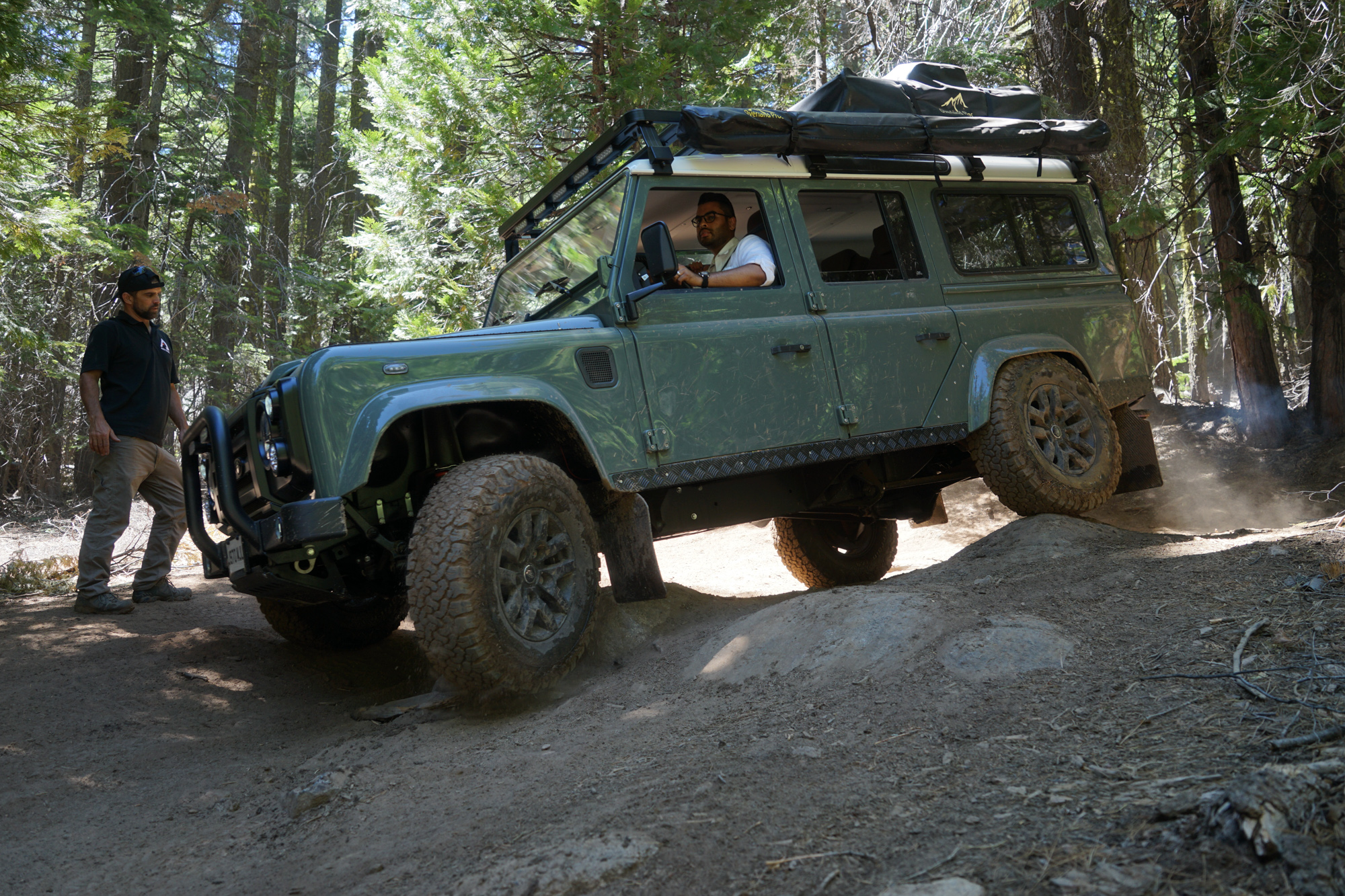
Not surprisingly, Wessex’s trail driving experience is fun, familiar, yet unremarkable in that is easily does what it’s designed to do. Expeditions for decades have used Defenders, as have field scientists, farmers, ranchers, Commonwealth military forces, non-governmental organizations, and overlanding adventurers. In low range, Wessex crawls over granite boulders, through deep ruts, and along loose shale without pause. It’s a Defender, the very same used in Camel Trophy competitions.
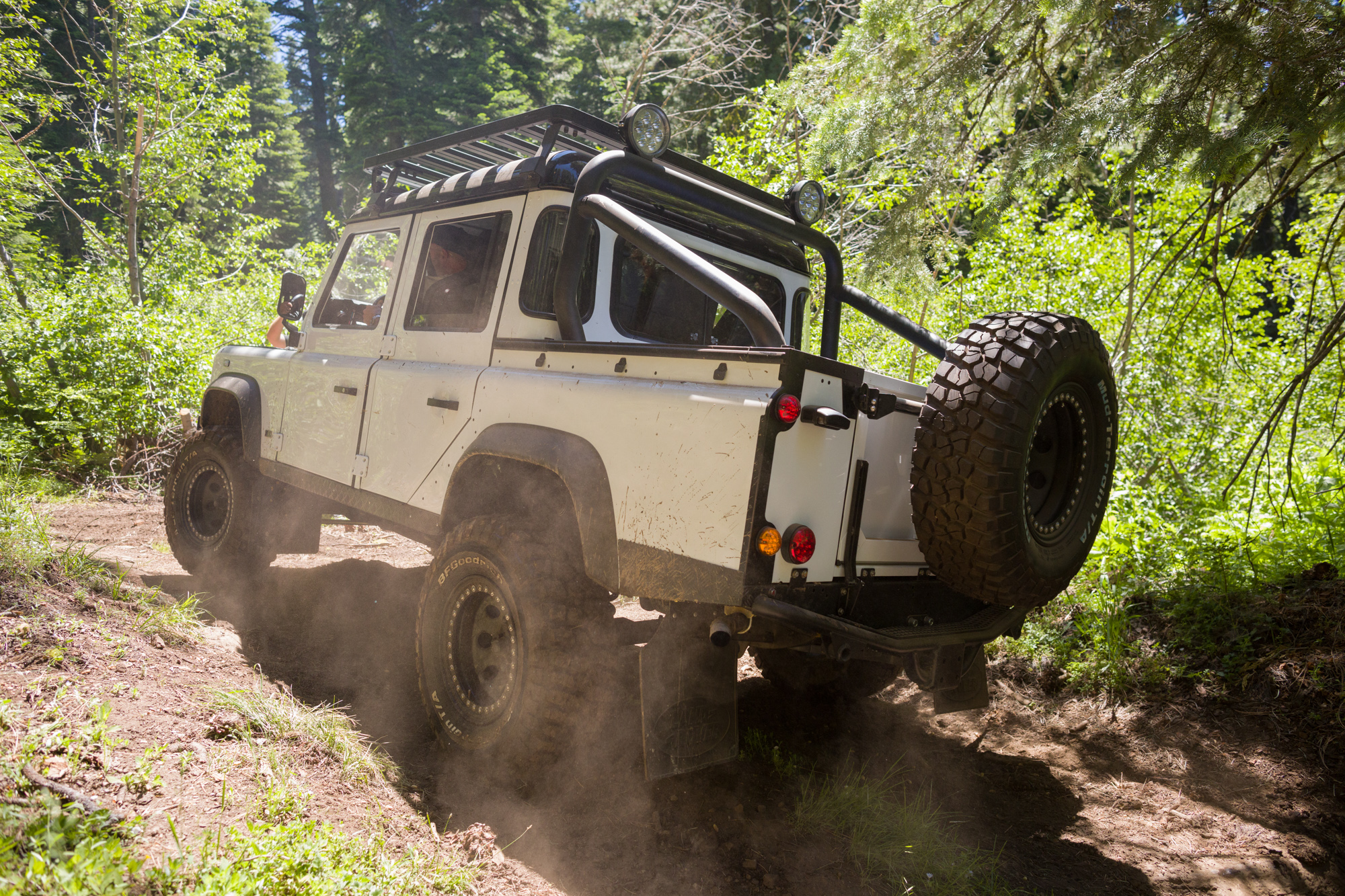

We lunch at a high Sierra peak and swap vehicles. I’m driving Yeti, a gas-powered, manual transmission 3.5-liter V8 D110 double cab, back down the trail. Exterior paint is Frozen White, and the interior is all leather with heated Recaro Cross Sportster CS Series seats up front. The gas motor has almost the same torque rating as the 200Tdi, but at higher RPM. Practically, this translates as higher revs being necessary to obtain the same torque to crawl over the same obstacle. I prefer the tractor-like, low RPM high torque performance of the 200-300Tdi motors. Even with a manual transmission in low range, a Defender diesel driver can almost come to a standstill without engaging the clutch and surmount an obstacle, using left foot braking and right foot gas as necessary.
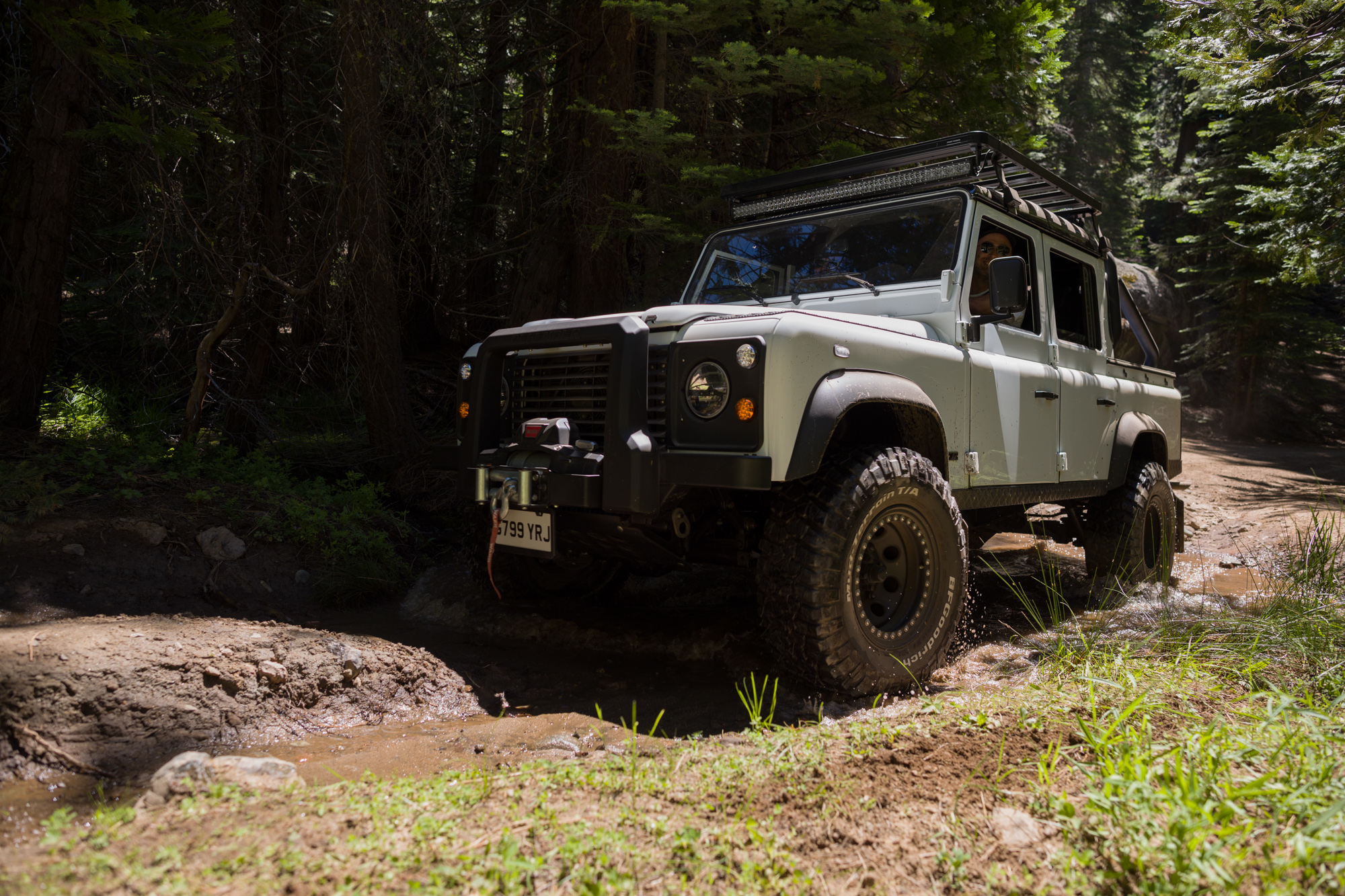
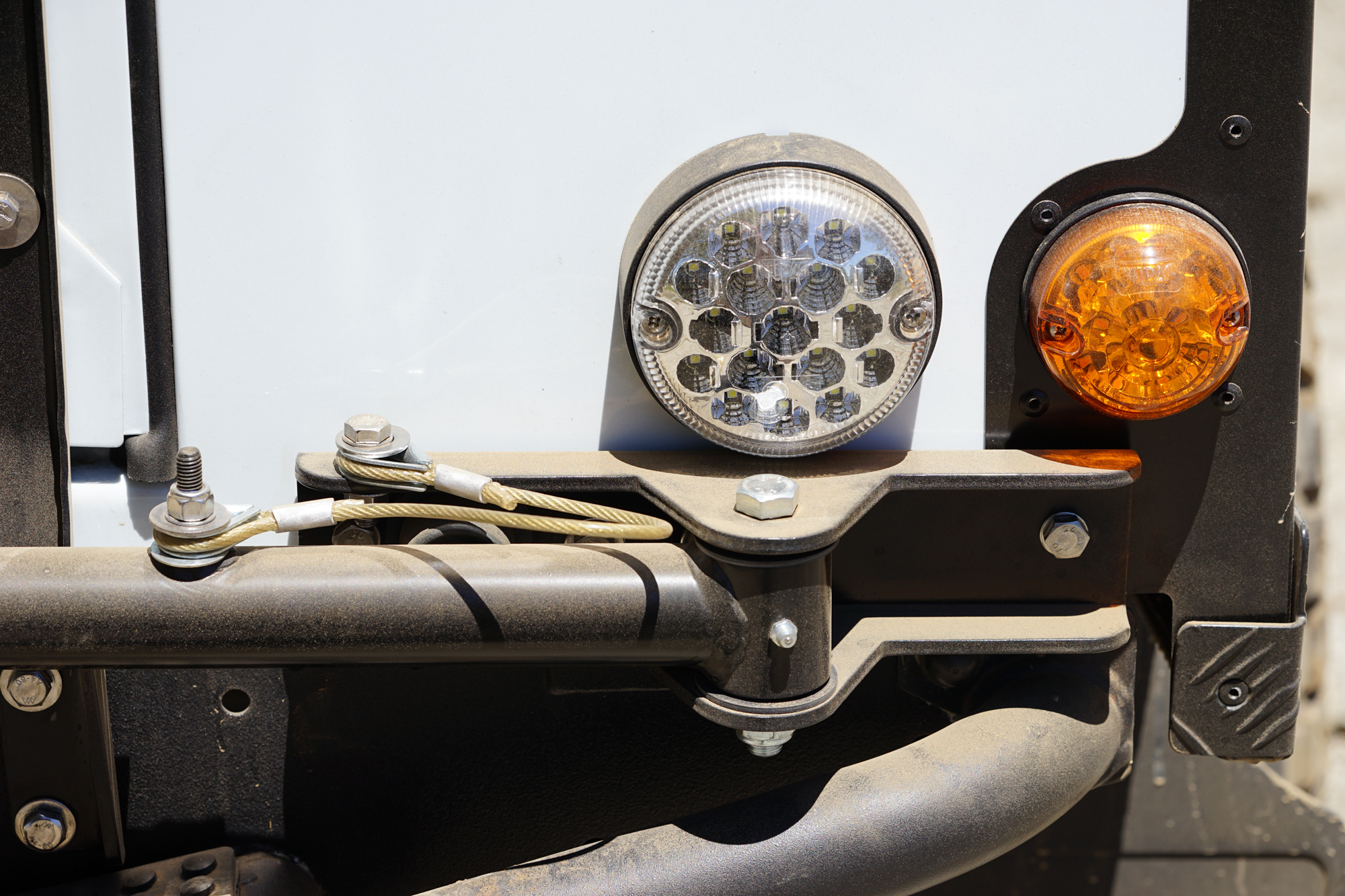
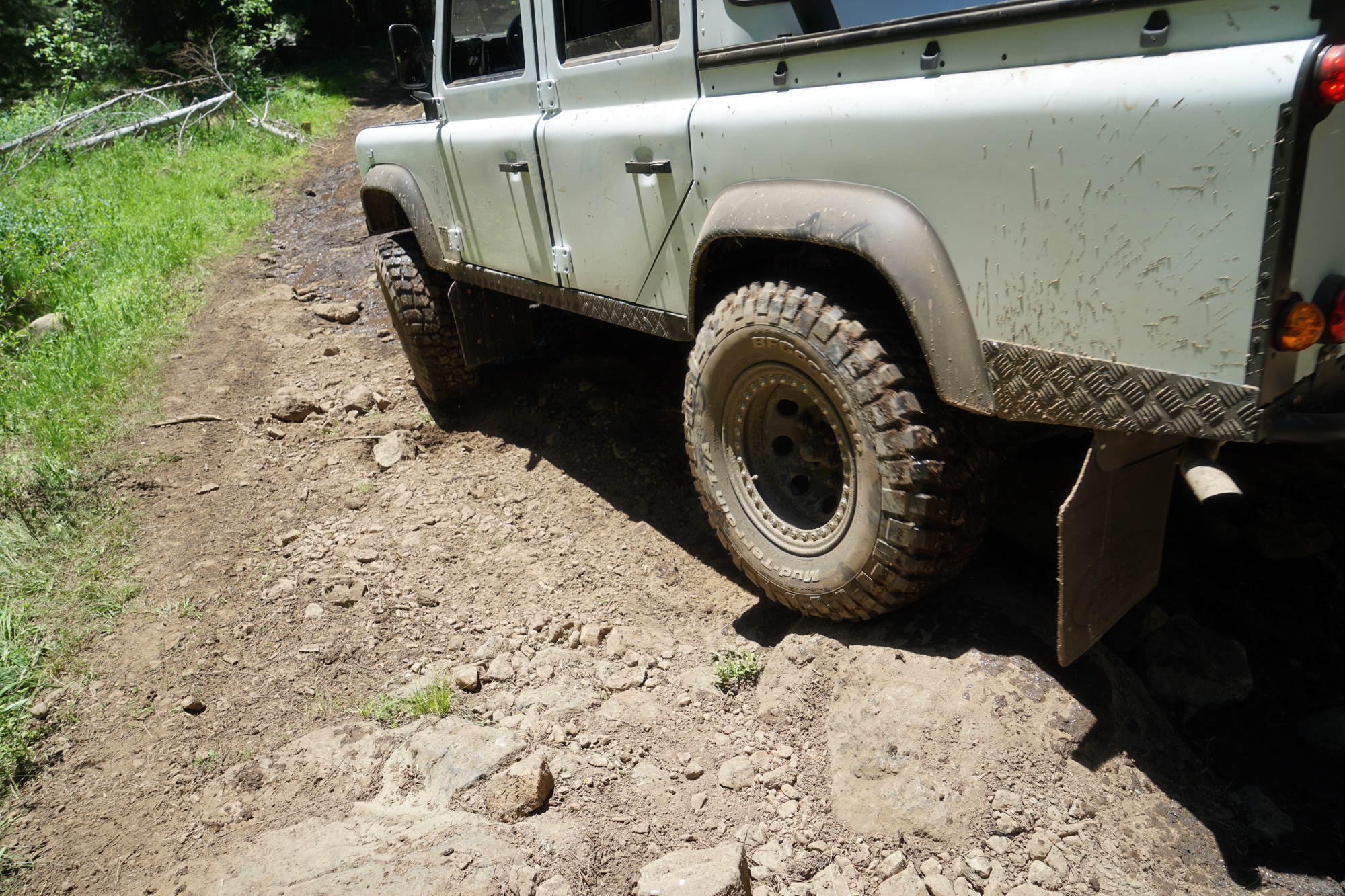
Nevertheless, the gas V8 does an excellent job on this trail. The double cab D110 doesn’t have the spacious interior feel of the station wagon, and rear-seat passengers have less legroom. Yeti’s interior reflects the V-engine muscle, though, with a small-diameter steering wheel and those Recaros. On the alpine highway back to the hotel, it feels a bit challenged, but then again, the maximum speed specified for this motor in 5th gear is only 80 mph.
An Old Soul Reborn
Arkonik taps into the soul-searching, philosophical side of the equation. Breathing new life into an old vehicle by repurposing, reusing, and recycling makes practical sense. But there is also something highly intriguing about becoming the new custodian of an item with a previous history. A Portuguese farmer possibly used your 110 to work his land, or a Greek olive oil merchant drove the goods to market in that D90. It’s captivating to ponder these notions, and Arkonik attempts to track these details for the truck’s new curator.
On the way back to the airport in Reno, I hitch a ride with Eric Yohe, Arkonik’s man on the ground in North America, and glean some information about their US clientele. Yohe has the right qualifications, including Michelin Off-Road Experience Instructor and Land Rover Experience Instructor. I could tell by his courteous tips and suggestions to some of the non-4WD press that he’s not new to dirt. He explains that most Arkonik customers he meets are outdoor enthusiasts (e.g., hunting, fishing, camping, overlanding). Many are professionals like doctors, lawyers, and financiers, or business owners. They know exactly what they want, and appreciate the opportunity to customize and individualize virtually every part of their Arkonik.
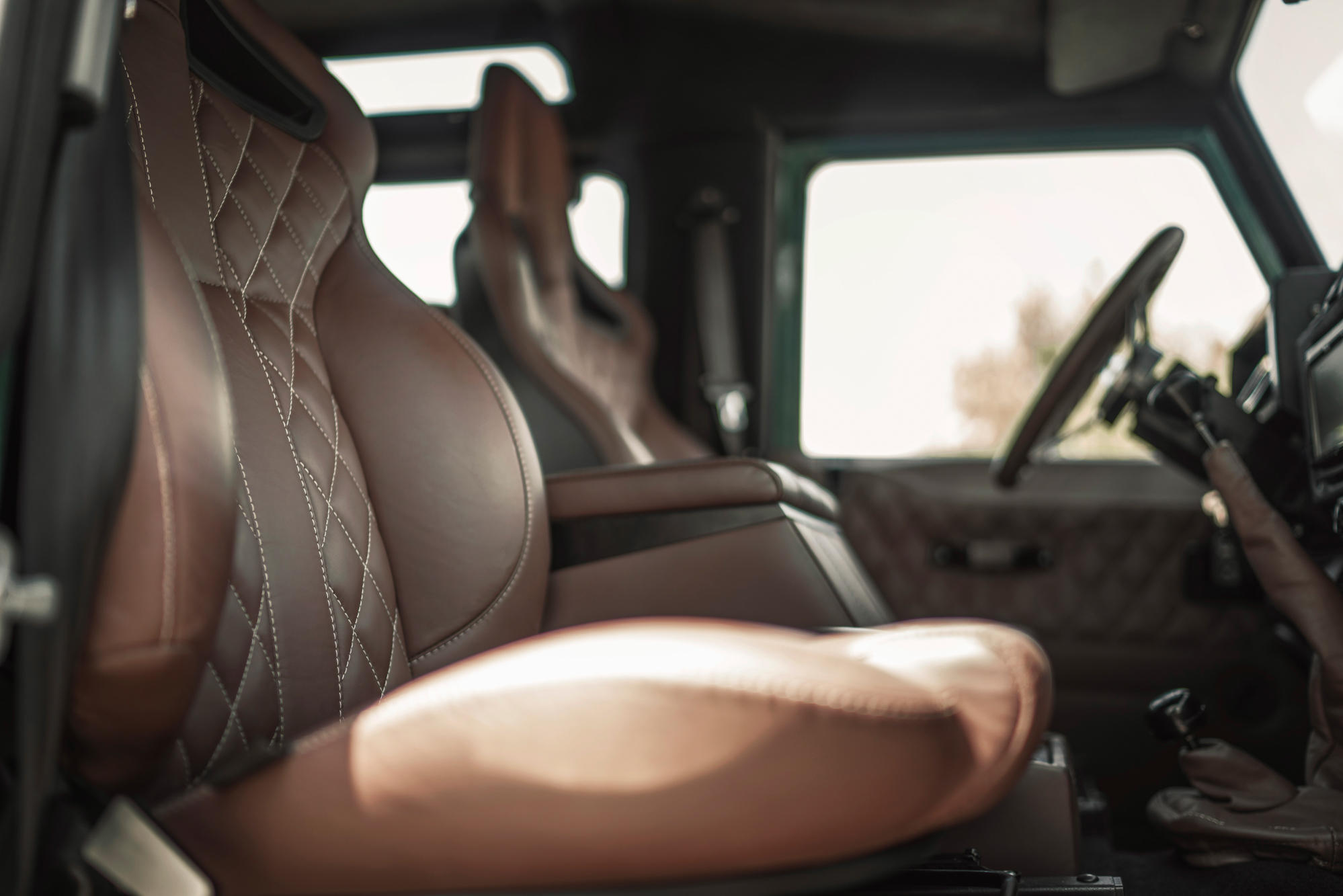

Later, I contact Lauren Groves, Arkonik’s Marketing Executive back in the UK, to understand more about their client demographics. She informs me that they have a few main customer categories, with 99 percent of them being men until very recently. There are increasing levels of interest and sales to women, and some co-share (his+her) Defender builds underway. The average client age is 40-55, though Arkonik recently sold to a few thirty-somethings.
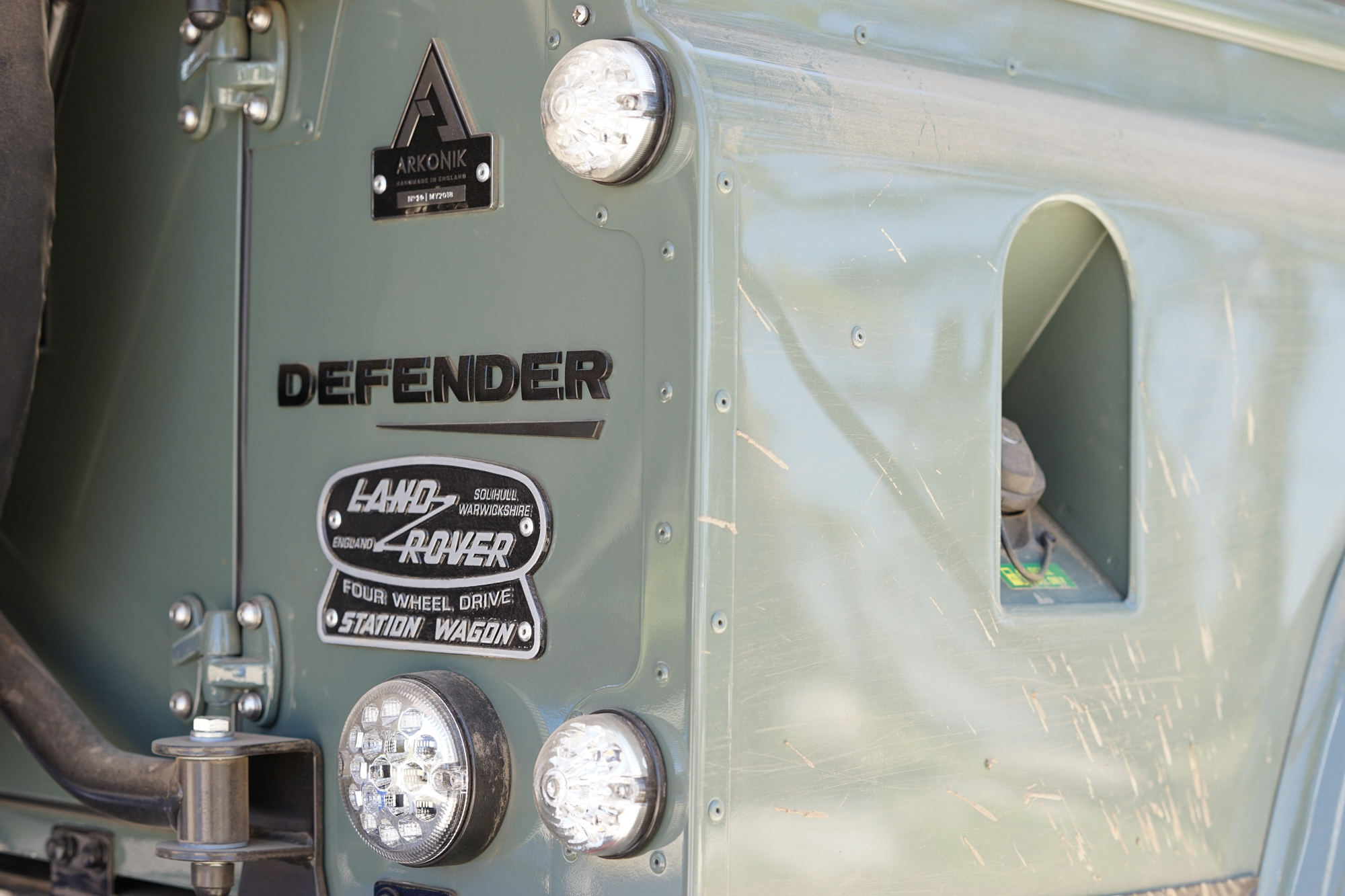
Some clients are “collectors” who buy a Defender to stand out or want to invest in a historic vehicle. This crowd usually sticks to tarmac. There are “the purists,” the overlanders who really understand the Defender’s capabilities. Arkonik have identified “the curious” client, who buys for the novelty factor, a weekend driver who wants a flashy toy. They also have a number of clients who’ve become “dealers.” These enjoy the design process and driving the Defender for a while, but then fancy a change, sell the truck, and start the entire Arkonik build process anew.
But it wasn’t the heated leather seats, functional air conditioning (procured in Germany), thicker aluminum body panels (well beyond original specs), or blueprinted motors that impressed me about these two Arkonik Defender 110s I drove. I was amazed that after four hours on a reasonably technical Sierra trail, there was no dust ingress into the interior. I was astounded that there were no interior rattles. I was in complete disbelief after a full day’s testing that there were no oil leaks. I did slide beneath with a flashlight, right under the watchful eye of company owner Andy Hayes, to check. It is evident that Arkonik has done their homework with the iconic Defender. The result is an extremely comfortable, highly capable bespoke workhorse. If you want a floor water leak, it’s surely a special order.
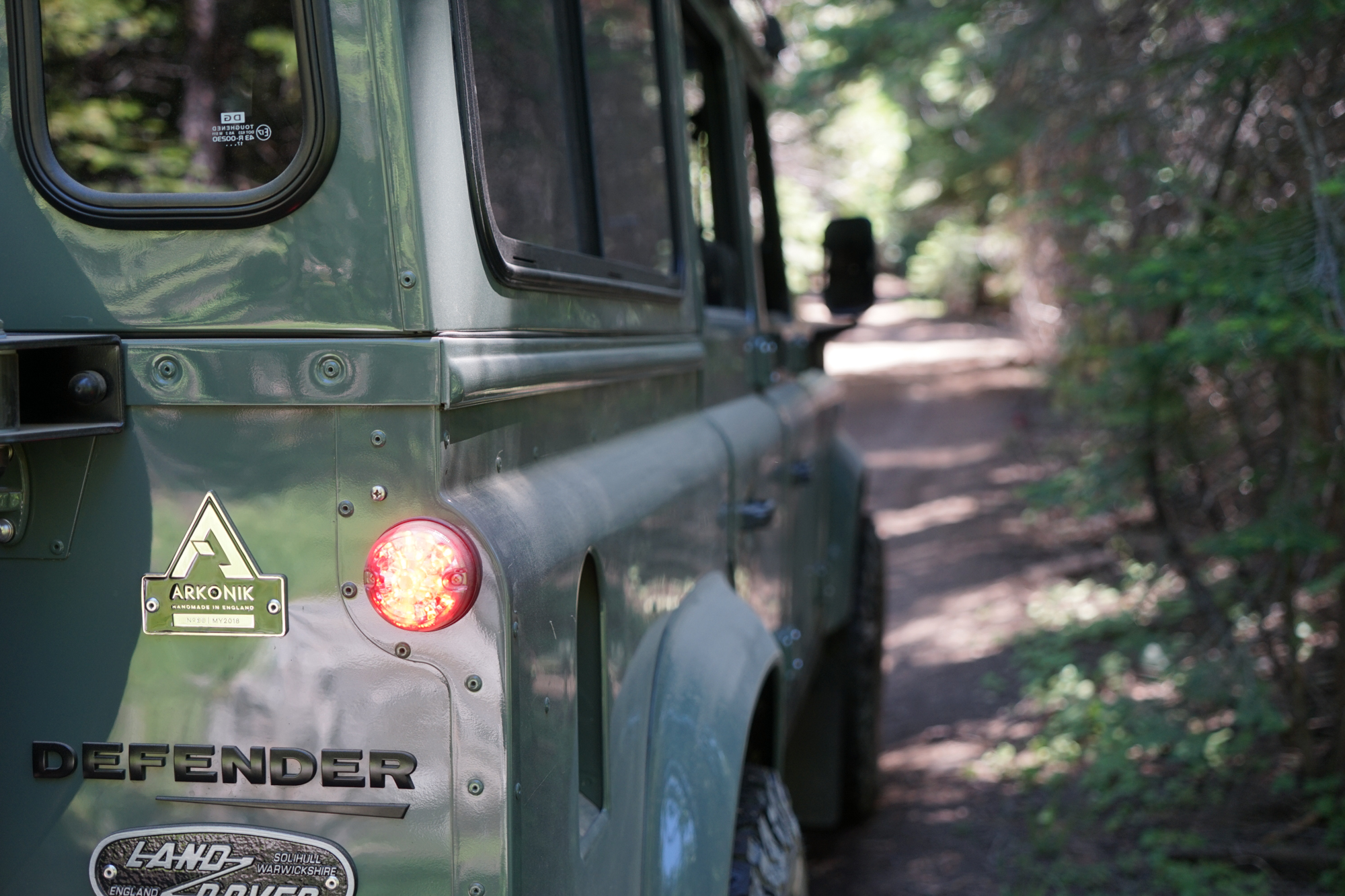
Starting at: $140,000 for a D110, and $120,000 for a D90
ARKONIK.COM


